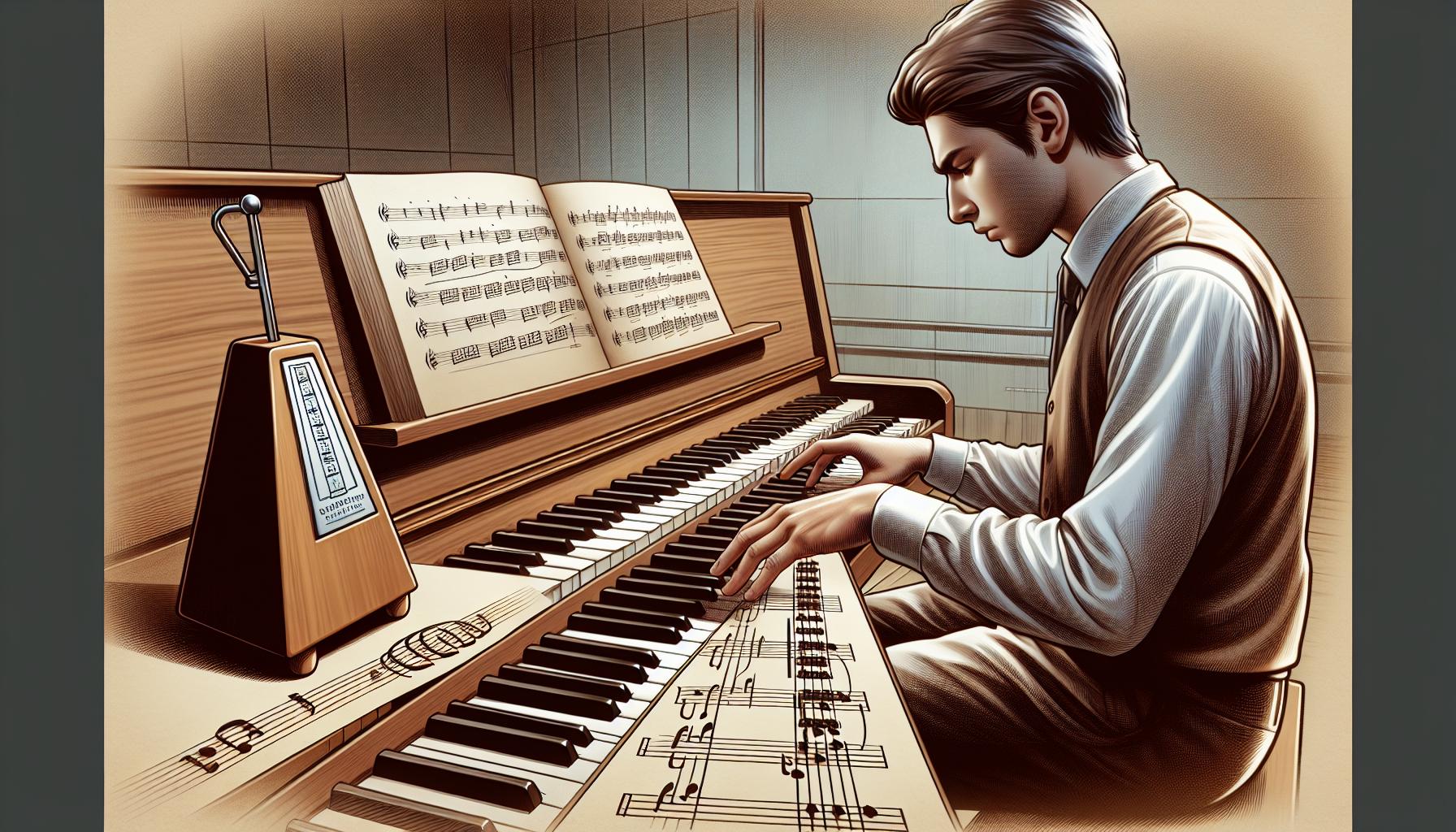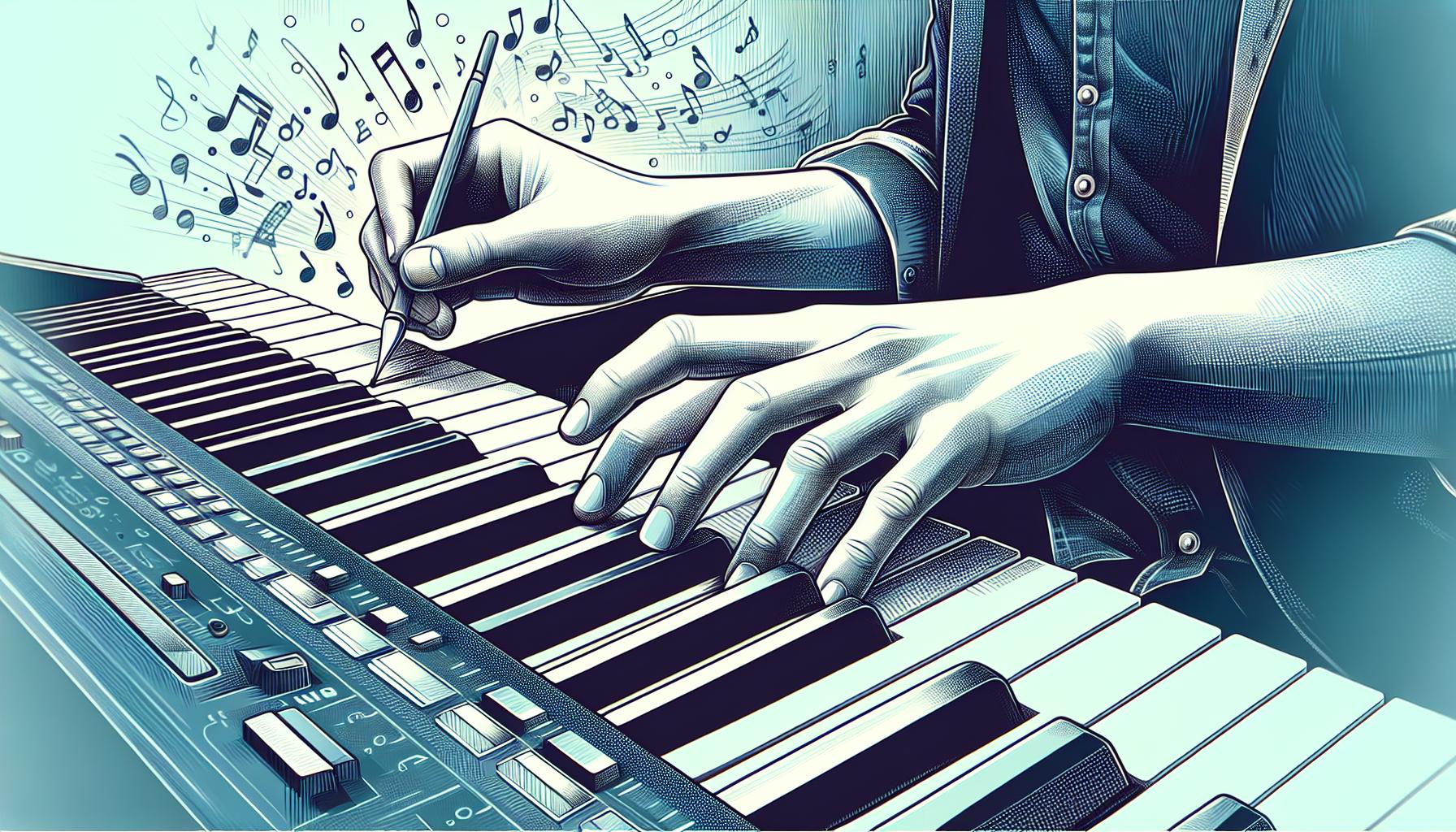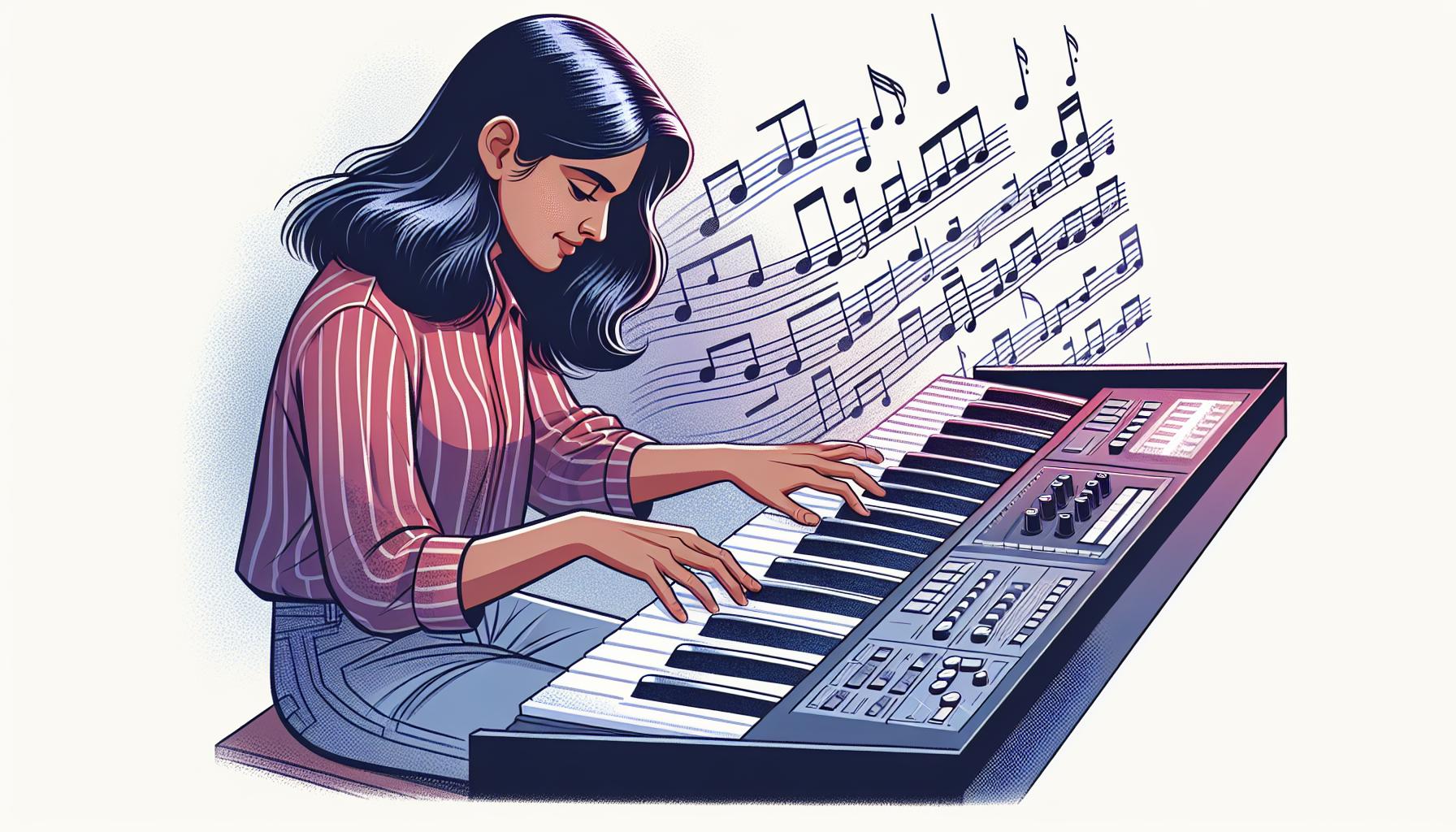Playing popular pop songs on the keyboard has become a delightful way for musicians of all levels to connect with their favorite tunes. From catchy melodies to unforgettable hooks, these songs bring joy and a sense of accomplishment when mastered. Whether you're a beginner eager to play your first song or an experienced player looking to add some pop flair to your repertoire, there's something incredibly satisfying about hitting those keys and recreating the hits we all love.
The beauty of pop music lies in its diversity and the way it evolves with time, making the keyboard an ideal instrument to explore its vast landscape. It's no wonder that keyboard covers of chart-topping hits often go viral, showcasing the universal appeal of playing pop songs on this versatile instrument. Let's dive into the world of popular pop songs on the keyboard, where melodies come to life and the rhythm gets everyone moving.
Top 10 Popular Pop Songs to Play on Keyboard
Delving deeper into the realm of pop tunes adaptable for keyboard rendition uncovers a treasure trove of melodies that resonate with players and audiences alike. The following compilation of top 10 pop songs combines timeless classics and modern hits, ensuring there's something for every keyboard enthusiast to enjoy and aspire to learn.
1. "Let It Be" by The Beatles: A timeless classic that offers both simplicity and depth, making it an excellent choice for beginners and seasoned players. The song's melodic piano line is iconic, providing a solid foundation in chord progression and rhythm.
2. "Someone Like You" by Adele: Known for its heartfelt lyrics and stunning piano accompaniment, this song allows keyboardists to explore emotional expression through music. Its chord progressions are both accessible and deeply moving.
3. "Clocks" by Coldplay: With its repetitive and hypnotic piano riff, "Clocks" is a masterclass in building atmosphere with a few well-chosen notes. This song is perfect for those looking to practice timing and rhythm.
4. "All of Me" by John Legend: A modern classic that has quickly become a favorite for piano players of all levels. Its beautiful melody and rich chords offer a rewarding challenge.
5. "Bohemian Rhapsody" by Queen: A more complex piece, this song allows keyboardists to delve into various musical styles within one composition. It's an ambitious choice that rewards dedication with its dynamic range and intricate parts.
6. "Fur Elise" by Beethoven: While not a "pop song" in the traditional sense, this piece is immensely popular and frequently played by keyboardists looking to bridge classical technique with popular music sensibilities.
7. "Shape of You" by Ed Sheeran: A contemporary hit that translates well to the keyboard, offering an upbeat rhythm and catchy melody that is sure to captivate listeners and players alike.
8. "Imagine" by John Lennon: This simple yet profound song is beloved by many. Its straightforward chords are perfect for beginners, while its message continues to inspire players towards expressive performance.
9. "Hallelujah" by Leonard Cohen: A song that has been covered by countless artists, "Hallelujah" possesses a hauntingly beautiful melody that fits the keyboard's expressive potential perfectly.
Tips for Mastering Pop Songs on the Keyboard

Mastering pop songs on the keyboard is a journey that's both exciting and challenging. It requires patience, practice, and a bit of strategy. Whether you're a beginner looking to learn your first song or an experienced player aiming to add more songs to your repertoire, these tips will help elevate your keyboard playing skills.
Start with the Basics. Before diving into complex songs, ensuring a solid understanding of the keyboard fundamentals is crucial. Learn to read sheet music if you haven't already as it's an invaluable skill for any musician. Familiarize yourself with major and minor scales, chords, and basic music theory. These elements form the foundation of most pop songs and will significantly aid in your learning process.
Choose the Right Songs. Start with simpler songs and gradually move to more complex ones. This approach helps build confidence and skill. Songs with fewer chords or repetitive chord progressions are excellent for beginners. For instance, many pop songs use the famous four-chord progression which is easier to master and can be a good starting point.
Practice Regularly but Smartly. Consistent practice cannot be overstated but it's also important to practice smartly. Break down songs into smaller sections, focusing on mastering each part before moving on. Use a metronome to improve your timing, starting slow and gradually increasing the speed as you become more comfortable.
Utilize Technology and Resources
In today’s digital age, a wealth of resources is available at your fingertips. Use online tutorials, sheet music, and keyboard apps to aid your learning. Many tutorials break down popular pop songs into manageable lessons that cater to various skill levels. Additionally, some apps listen to you play and provide instant feedback, which can accelerate your learning curve.
Play Along with the Track. Playing along with the original track can boost your rhythm and timing. It also makes practice sessions more enjoyable and gives you a sense of how the song should sound. Start by playing along at a reduced speed, then gradually increase to the original tempo as you gain confidence.
Focus on Expression. Pop music often conveys emotion through dynamics and tempo changes. Once you've got the notes and rhythms down, focus on playing expressively. Experiment with different dynamics and articulations to find what best suits the song and your personal style. It’s these nuances that transform a good performance into a great one.
Learning Techniques for Beginners

When embarking on the journey of learning popular pop songs on the keyboard, beginners often face a maze of techniques and advice. Filtering through this abundance of information can be daunting, but there are several proven strategies that can pave the way to mastery.
Firstly, mastering the basics cannot be overstated. Before diving into complex songs and melodies, a solid foundation in keyboard fundamentals – such as understanding scales, chords, and hand positioning – is crucial. This groundwork not only makes learning songs easier but also enhances musicality and expression.
Selecting the right songs to start with plays a pivotal role in maintaining motivation and interest. Beginners should choose pop songs that are not overly complex. Starting with simpler melodies allows learners to experience success early in their journey, which can significantly boost their confidence and enthusiasm for more challenging pieces.
Effective practice routines are the backbone of any musical learning process. Beginners should aim for regular, focused practice sessions rather than sporadic, lengthy ones. Consistency is key, as it helps build muscle memory and familiarity with the keyboard. Setting small, achievable goals for each practice session can make the process feel more manageable and rewarding.
Leveraging technology and resources can significantly accelerate learning. Numerous online tutorials, apps, and interactive software are designed specifically for keyboard learners. These tools often provide visual and auditory aids that can help clarify complex concepts and offer interactive exercises for practice.
Playing along with the original track of the pop song being learned is another effective technique. This not only helps with rhythm and timing but also allows learners to gauge their progress by comparing their playing to the actual song. Listening to and playing along with the music can also improve one's ability to capture the nuances and dynamics that define pop music.
Focusing on expression is essential for bringing any pop song to life on the keyboard. Dynamics, tempo, and emotional delivery all contribute to the overall impact of a performance. Beginners should experiment with these elements, even in their early stages of learning, to develop a more expressive and impactful playing style.
Engaging with a community of fellow learners can provide additional motivation and insight. Joining online forums, social media groups, or local music clubs can offer valuable support, tips, and inspiration from others who are on the same learning journey. Sharing progress and challenges with a community can also make the learning process more enjoyable and less isolating.
Advanced Keyboard Techniques for Playing Pop Songs

Once a keyboard player has a solid foundation in the basics and can confidently navigate through simpler songs, advancing their skills to tackle more complex pop songs is an exciting next step. Advanced techniques not only add depth and richness to the music but can also distinguish an intermediate player from someone truly adept at their craft.
Mastering Syncopation and Complex Rhythms
A key element in many pop songs is syncopation, where emphasis is placed on off-beats or weaker beats in a measure. Mastering this technique requires:
- Focused listening to the rhythm of pop songs to internalize their groove.
- Practicing with a metronome to maintain timing while playing syncopated rhythms.
Complex rhythms often involve irregular patterns that can challenge even experienced players. Incorporating these into practice sessions gradually can help build proficiency.
Utilizing Proper Voicing
Voicing refers to how chords are spread out across the keyboard and which notes are highlighted. Effective voicing can transform the sound of a song by:
- Bringing out the melody more clearly while playing chords.
- Creating a fuller sound by distributing notes across the keyboard.
Players should experiment with different voicings to discover what best suits the song they’re learning.
Implementing Advanced Chord Progressions
Pop music often features advanced chord progressions that go beyond basic major and minor triads. Understanding and implementing these can add a new layer of complexity and emotion to performances. Advanced chords include:
- Seventh chords — add a depth and jazz-like quality to pop songs.
- Suspended chords — create a sense of anticipation and resolve in the music.
Learning these chords and how to transition smoothly between them is crucial for playing advanced pop arrangements.
Enhancing Expression with Dynamic and Tempo Changes
Expression is what makes a performance compelling. Advanced keyboard players know how to use dynamics (how loudly or softly they play) and tempo changes to make their performance stand out. Techniques include:
- Gradually increasing volume (crescendo) or decreasing it (decrescendo) to build intensity or convey emotion.
- Making slight adjustments to tempo (rubato) to add expressiveness without losing the overall pace of the song.
How to Add Your Unique Style to Pop Song Covers

Mastering popular pop songs on a keyboard can often feel like a journey that merely scratches the surface of musical expression. While technical proficiency is crucial, the true challenge lies in making a piece truly one's own. To add a unique style to pop song covers, keyboard players need to explore beyond the written notes and basic chord structures.
One effective way to start is by experimenting with chord voicings. Most pop songs rely on a relatively simple progression of chords. By altering the voicing, or the way in which these chords are played, musicians can inject their own personality into a piece. For example, playing a chord in a higher register can give a song a lighter, more ethereal feel, while lower voicings can add depth and gravity.
Incorporating improvisation is another powerful tool for personalization. This doesn't mean keyboardists have to embark on long, complex solos—though they certainly can. Instead, adding small improvised flourishes to the melody or creating a unique intro or outro can significantly distinguish one's cover from the original. To get started, they could try embellishing the melody with additional notes or playing around with rhythm within the structure of the song.
Playing with dynamics also dramatically affects how a pop song feels. Many artists have made their covers stand out simply by changing the song’s intensity. For instance, playing a typically upbeat song with a softer, more introspective approach can reveal an entirely new emotional layer. Dynamic contrast, such as gradually building intensity or suddenly dropping to a whisper, can captivate listeners and keep them engaged throughout the performance.
In addition to these techniques, incorporating different musical genres into pop covers can add a fresh twist. A keyboard player might take a pop song and infuse it with jazz chords, a classical arrangement, or even electronic elements, depending on their skills and technology available. This cross-genre exploration not only showcases the musician's versatility but also breathes new life into well-known tunes.
Lastly, the choice of instrument sounds and effects available on electronic keyboards can greatly alter the character of a song. Using a vintage electric piano sound instead of a standard grand piano tone, adding delay or reverb effects, or even layering synth textures, can turn a conventional pop song into something unexpected and delightful.
Conclusion
Mastering pop songs on the keyboard is just the beginning. The real magic happens when players inject their unique flair into each piece. By experimenting with chord voicings, embracing improvisation, and playing with dynamics, keyboardists can elevate their covers from good to unforgettable. Blending genres and using the vast array of sounds and effects available on electronic keyboards allows for creative freedom that can transform any pop song into a personal masterpiece. So, let's keep pushing the boundaries of what's possible and make every performance uniquely ours.
Harlan Kilstein began playing piano during covid with no piano background at all. He taught himself how to play learning what to do and what not to do.
Today he's an advanced intermediate player and can help you grow in your skills because he learned all this on his own.








